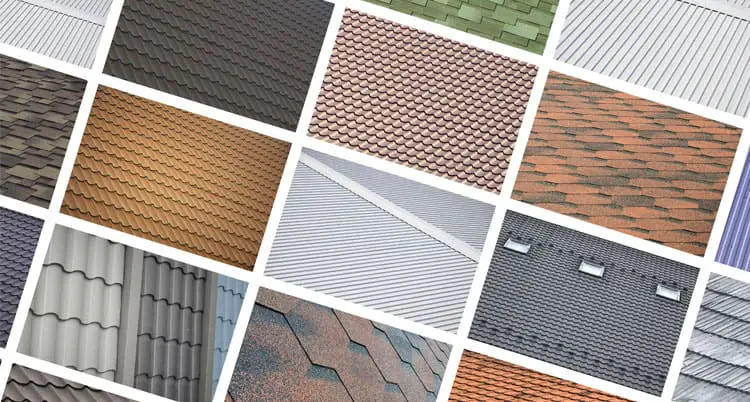Introduction
A roof serves as the primary barrier between your home and the elements, making its role vital in protecting the structural integrity of your house. Different climates impose various demands on roofing materials. For instance, a roof in a hot, arid region will face different challenges compared to one in a cold, snowy climate. Additionally, your budget plays a crucial role in determining which materials and styles are feasible options. By understanding the strengths and weaknesses of different roofing types, you can make an informed decision that balances performance and cost-effectiveness.
Understanding Climate Requirements
Hot and Arid Climates
In hot, dry areas, such as the southwestern United States, roofs need to reflect sunlight and withstand high temperatures. Materials like clay tiles, concrete tiles, and metal roofing are ideal.
Clay and Concrete Tiles: These materials are excellent for hot climates because they have natural thermal resistance. They can reflect sunlight and help keep your home cooler. Additionally, they are highly durable and can last for decades with minimal maintenance.
Metal Roofing: Metal roofs are also great for hot climates due to their reflective properties. They deflect solar radiation, reducing the heat that enters your home. Metal roofing is lightweight and can be installed over existing roofs, which can save on removal costs.
Cold and Snowy Climates
Homes in colder regions, such as the northern United States, need roofs that can bear heavy snow loads and provide good insulation.
Asphalt Shingles: These are popular in cold climates due to their ability to shed snow and ice efficiently. They also provide good insulation, helping to keep your home warm during the winter months.
Slate and Tile Roofing: While more expensive, slate and tile roofs offer excellent durability and insulation properties. They can withstand heavy snow loads and are highly resistant to freeze-thaw cycles.
Wet and Humid Climates
In areas with high humidity and frequent rain, like the southeastern United States, roofs must resist moisture and the growth of mold and mildew.
Asphalt Shingles: These are also suitable for wet climates because they can be treated to resist algae and mold growth. They provide a good seal against water and are relatively inexpensive.
Metal Roofing: Metal roofs are highly resistant to moisture and do not support mold growth. They are also effective in areas prone to heavy rainfall due to their ability to quickly shed water.
Balancing Budget Considerations
Low to Mid-Range Budget Options
If you’re working with a limited budget, there are still several good roofing options that offer durability and efficiency.
Asphalt Shingles: These are the most cost-effective roofing option, with prices ranging from $1 to $4 per square foot. They offer a balance of affordability, durability, and ease of installation. With proper maintenance, asphalt shingles can last up to 30 years.
Metal Roofing: Although slightly more expensive than asphalt shingles, metal roofing is still within reach for many homeowners. Metal roofs cost between $5 and $12 per square foot but offer longer lifespans (up to 50 years) and greater energy efficiency.
High-End Budget Options
For those with a larger budget, premium roofing materials offer superior durability, aesthetics, and performance.
Slate Roofing: Slate is one of the most durable roofing materials available, with a lifespan of over 100 years. It is highly resistant to weathering and provides excellent insulation. However, slate roofing is expensive, costing between $15 and $30 per square foot, and requires professional installation.
Clay and Concrete Tiles: These materials are also on the higher end of the cost spectrum, ranging from $10 to $20 per square foot. They offer excellent durability and energy efficiency, making them a worthwhile investment for long-term performance.
Energy Efficiency Considerations
Cool Roofs: Regardless of the climate, energy-efficient roofing options can help reduce your energy bills. Cool roofs are designed to reflect more sunlight and absorb less heat. Materials such as reflective coatings, light-colored asphalt shingles, and metal roofing with reflective paint can significantly lower cooling costs in hot climates.
Insulation: In colder climates, choosing a roofing material that provides good insulation can reduce heating costs. Materials like asphalt shingles and slate have good insulating properties, helping to maintain a consistent indoor temperature.
Environmental Impact
When selecting a roofing material, consider its environmental impact. Some materials are more sustainable and eco-friendly than others.
Recycled Materials: Many modern roofing options include recycled content. For example, metal roofs can be made from recycled steel, and some asphalt shingles are produced using recycled materials. These options help reduce waste and lower the demand for new raw materials.
Longevity: Choosing a durable roofing material can reduce the frequency of replacements, minimizing waste. Slate, metal, and tile roofs have long lifespans, which means they need to be replaced less often, contributing to sustainability.
Conclusion
Choosing the ideal roof type for your climate and budget involves balancing several factors, including weather conditions, material durability, energy efficiency, and cost. By understanding the specific demands of your climate and considering your financial constraints, you can select a roofing option that provides long-term protection and value for your home. Whether you opt for the affordability of asphalt shingles, the durability of metal roofing, or the premium performance of slate or tile, making an informed decision will ensure that your roof serves you well for years to come.


